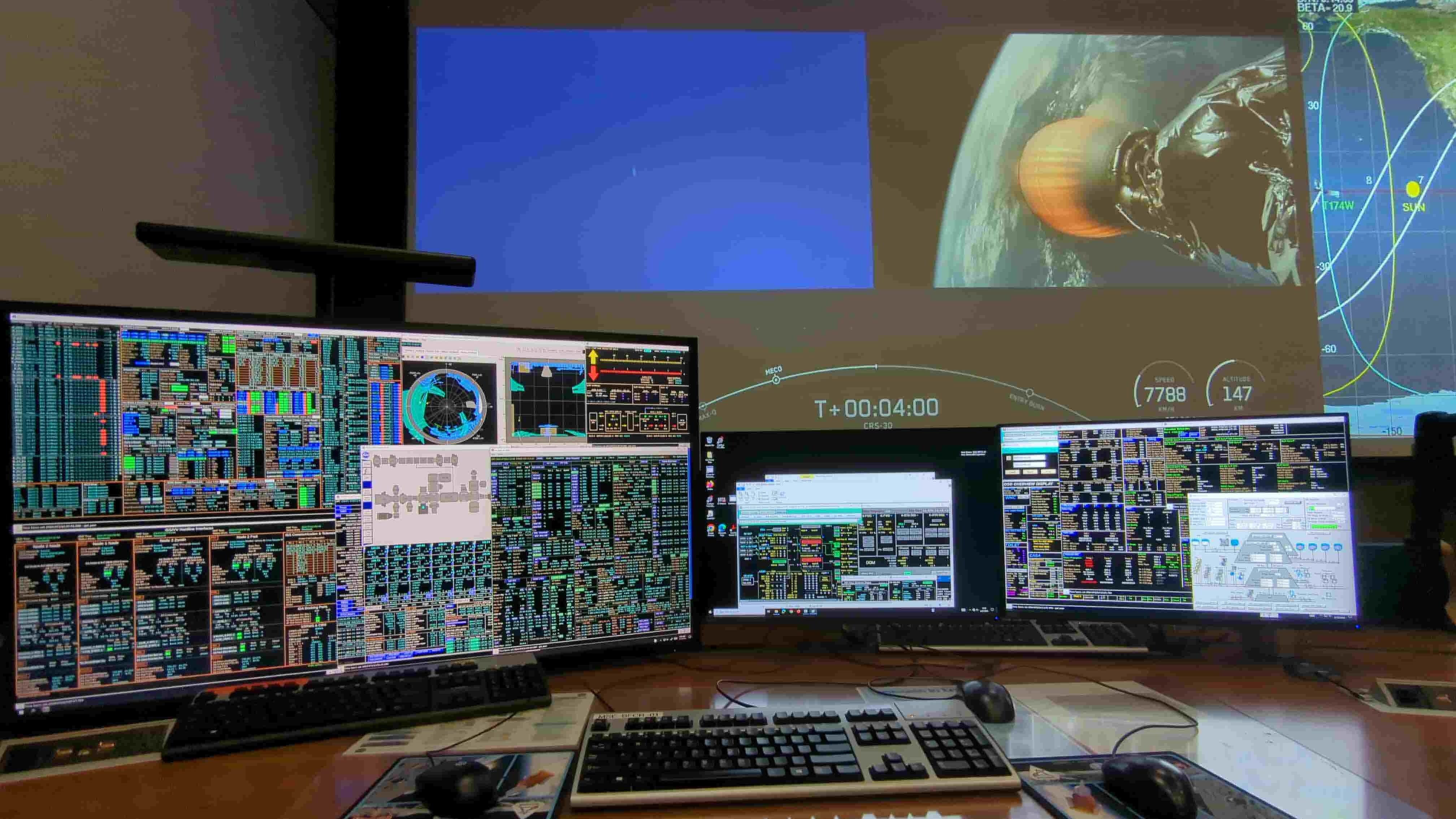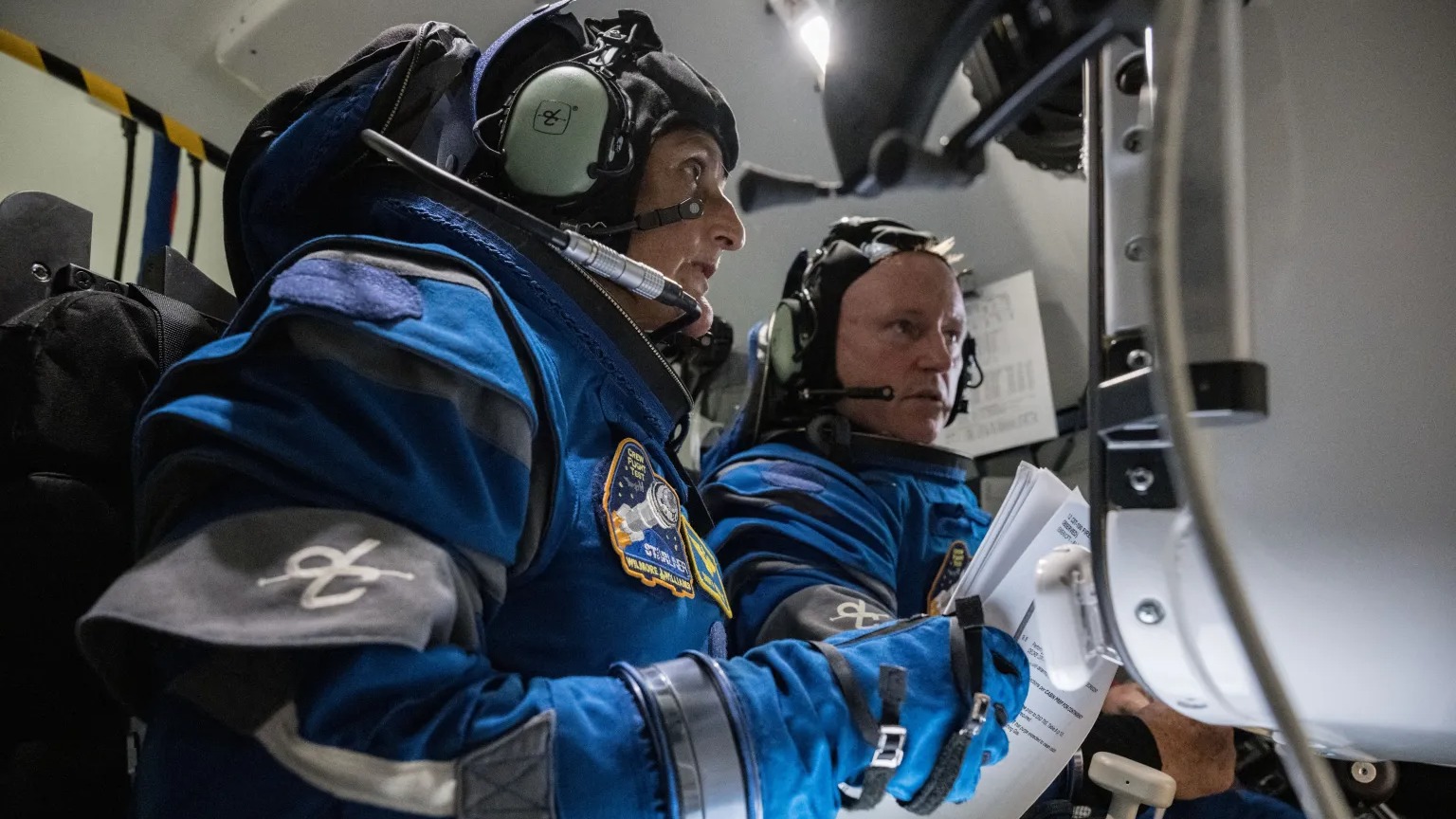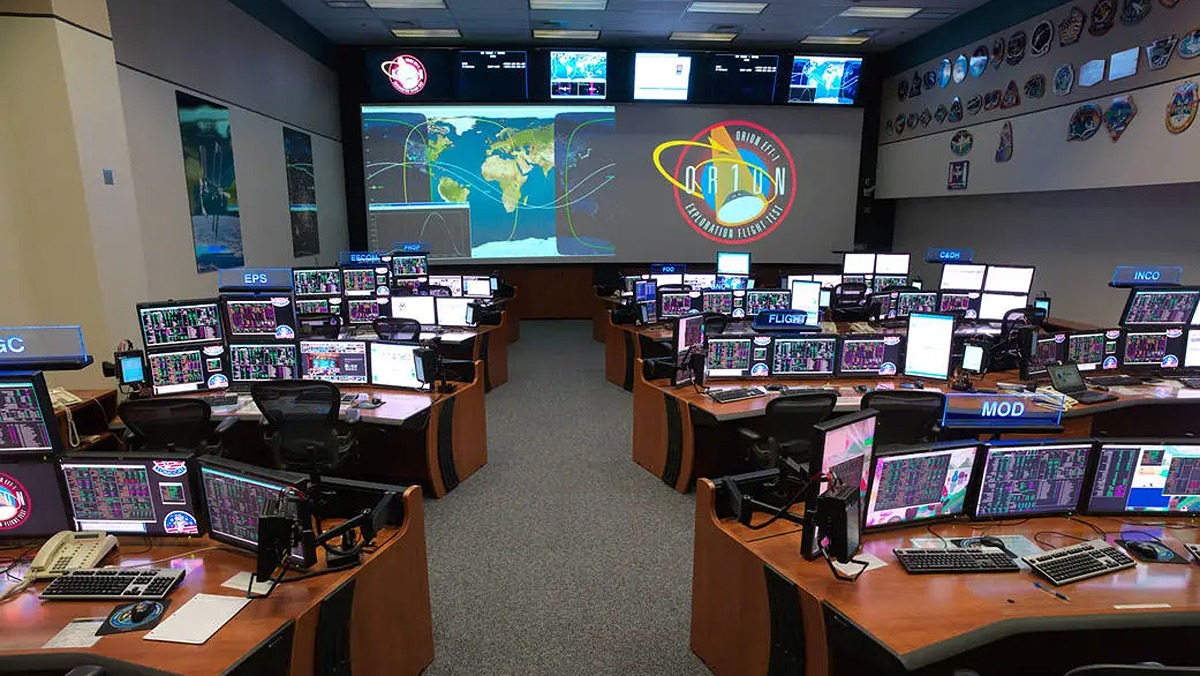I toured NASA's Mission Control ahead of Boeing's 1st Starliner astronaut flight. Here's what it was like (exclusive)

HOUSTON — It's hard to beat an in-person launch experience — especially if you're watching in Mission Control, the literal hub of NASA's human spaceflight program.
Reporters and flight directors gathered here at NASA's Johnson Space Center on Thursday (March 21) at a big control room screen to watch SpaceX launch its 30th robotic cargo mission to the International Space Station (ISS) from Florida. Happily, it was a flawless liftoff.
But aborts were on our mind that day. A Russian Soyuz spacecraft with crew on board had scrubbed its own launch in Kazakhstan just hours before — and we were here primarily to discuss Boeing's first Starliner mission to the ISS with astronauts on board. (Soyuz eventually did fly to space safely on March 23, after an electrical issue with the rocket was resolved.)
NASA's prearranged tour with reporters here emphasized that the years of delay in getting Starliner ready to fly astronauts were a consequence of prioritizing safety standards — just like why Soyuz aborted earlier in the day.
"We understand the steps that need to be taken to design, build, test, and what to do with test failures and things of that nature," said LeRoy Cain, a former space shuttle flight director now serving as deputy program manager and spacecraft mission director for Starliner.
Related: NASA, Boeing delay Starliner capsule's 1st astronaut launch to early May
Cain was the NASA flight director overseeing reentry during the fatal Columbia space shuttle disaster that saw seven astronauts lose their lives on Feb. 1, 2003, high in Earth's atmosphere. He emphasized that the lessons learned from that tragedy "travel well" more than 20 years later, to a new generation of flight directors.
Breaking space news, the latest updates on rocket launches, skywatching events and more!
"One of the things that a lot of us have learned is, try to think about things from the standpoint of what's missing, what's not on the chart, what's not in the discussion," Cain said.
Starliner aims to launch commander Barry "Butch" Wilmore and pilot Suni Williams to the ISS no earlier than May 1 in the second commercial crew vehicle for NASA, Boeing's Starliner. The first vehicle, SpaceX's Crew Dragon, has delivered eight NASA-led astronaut crews and three Axiom Space short-duration groups to the ISS after Dragon's own debut crewed test mission in 2020.
Wilmore's and Williams' ride to space has been pushed back several years due to a range of technical issues. Starliner's first uncrewed test flight, in December 2019, failed to reach the ISS, for example. Wilmore's and Williams' coming mission, known as Crew Flight Test (CFT), was delayed last year due to issues with the capsule's parachutes and the tape around its wiring. But with careful attention to fixing the issues, the NASA flight directors emphasized, the team is just about ready to fly.
Related: Boeing begins fueling Starliner capsule ahead of 1st astronaut launch
The Blue Flight Control Room (BFCR), where we watched the SpaceX launch at the Christopher C. Kraft, Jr. Mission Control Center, used to be called the Special Vehicles Operations Room. This room was first used for "monitoring spacewalks and other specialized activities," according to the book "Johnson Space Center: The First 50 Years" (Arcadia Publishing, 2013).
The room was repurposed to control ISS flights between 1998 and 2006, before the Apollo program-era Flight Control Room-1 was upgraded to take over the job of directing ISS. One of the BFCR's major roles after that was assisting with the last servicing mission to the Hubble Space Telescope in 2009, according to NASA.
In recent years, the BFCR served as the flight control room during the Orion Exploration Flight Test 1 to Earth orbit in 2014, NASA says, which was the first time the Orion spacecraft for Artemis program missions to the moon launched to space.
The BFCR has also been key to Starliner's flights since the beginning. For example, as with future crewed launches, the flight software and guidance and navigation teams worked here to support Starliner's first spaceflight in December 2019 — Orbital Flight Test, which failed to reach the ISS — NASA stated.
Post-launch, NASA will support mission operations a short walk away in the same building: both at the White Flight Control Room, and an adjacent area known as Ops Suite 1. Boeing's engineering team will be split between the BFCR here in Houston and the company's mission control center in Florida.
Standing in the BFCR on Thursday were a suite of flight directors alongside Cain, all of whom emphasized that safety will come first in carrying the first Starliner crew to space. One example will be simulating a close encounter with space debris while Williams and Wilmore are on the ISS.
"We're actually going to walk through ... a safe haven procedure," said Chloe Mehring, Starliner undocking flight director. The astronauts will pretend to make a controlled dash to their spacecraft, with any necessary gear, for a simulated emergency undocking from ISS. The teams will then assess how long it takes to configure Starliner for departure, she said.
Launch and re-entry tend to be the most hazardous times for space missions, which is why Rick Henfling — the Starliner entry and landing flight director — stressed that he has a "team of experts" that will be checking the weather in the western United States for safe touchdown locations. Only then, he said, "we'll get the joint NASA and Boeing teams together to agree that it's the right day to undock and separate from the space station."
After years of preparation for Starliner, "we're so close to launch," said ascent flight director Mike Lammers. He pointed to the large team of people supporting the mission with safety in mind, and said the first Starliner astronaut flight will be another learning point for the team to do even better the next time.
"The crew is so prepared, [but] it's a test flight. We know we're going to learn things, and we're going to really enjoy it."

Elizabeth Howell (she/her), Ph.D., was a staff writer in the spaceflight channel between 2022 and 2024 specializing in Canadian space news. She was contributing writer for Space.com for 10 years from 2012 to 2024. Elizabeth's reporting includes multiple exclusives with the White House, leading world coverage about a lost-and-found space tomato on the International Space Station, witnessing five human spaceflight launches on two continents, flying parabolic, working inside a spacesuit, and participating in a simulated Mars mission. Her latest book, "Why Am I Taller?" (ECW Press, 2022) is co-written with astronaut Dave Williams.


